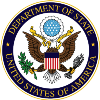#COP21: Fighting the Impacts of Climate Change through National Adaptation Plans
By: Jaclyn A. Cole, Managing Co-editor of DipNote and Meredith Ryder-Rude, an adaptation negotiator with the U.S. delegation at COP21.
When people think of climate change, they often imagine glaciers melting in the arctic, smog covering the skylines of major cities around the world, and extreme weather events that range from intense droughts in California to cyclones in the Pacific. What does not immediately come to mind is the planning and action required for national and local governments to address and respond to these impacts.
As representatives from nations around the world meet at this year’s UN Climate Change Conference in Paris, also known as COP21, we expect that one of the outcomes of the agreement will be a clear signal that along with increasing efforts to reduce the emissions that cause climate change, adapting to its impacts is an important part of the global response to the challenge. As Secretary Kerry stated this week at COP21, “we have a moral responsibility to adapt and prepare for those impacts and enable the most vulnerable among us to be able to do the same.”
One of the most fundamental steps in adapting to climate change is increasing our understanding of climate risks across sectors. Equally important is the coordination of adaptation actions across government agencies and various levels of decision-making — from cities to states to the national government. Based on our experiences in the United States, we know that planning at the national level is critical, but also challenging.
To facilitate this type planning and action in developing countries, the United States, along with Brazil, Peru, Germany, Japan, Jamaica, Malawi, the Philippines, Togo, South Africa, and the UK launched the National Adaptation Plans (NAP) Global Network. The Network aims to enhance support for national adaptation planning and action in developing countries. The Network will work to facilitate the exchange of lessons and best practices, improve coordination between bilateral development agencies, and support enhanced leadership for adaptation at the national level in developing countries. The Network is also working to establish an active community of practice within and across countries, through which bilateral and local actors develop, share, and learn from best practices and concrete examples of what NAP processes look like on the ground.
Already during the course of this year’s COP21 in Paris, we have heard a demand for increased, targeted in-country support for and coordination on national adaptation planning. Recognizing the critical importance of climate adaptation, particularly for the world’s most vulnerable, the United States is investing $10 million in the NAP Global Network, including an additional $6 million this year to increase support for the NAP process in developing countries. This year’s funding will provide support to developing countries to: develop national adaptation plans to promote greater coordination and coherence in identifying risks and priorities; using those plans to prepare viable funding proposals; and, identify relevant funding sources.
Just as President Obama has required since September 2014 that all U.S. development agencies mainstream climate risk considerations into our broader development portfolio, the United States is continuing to support our partner countries as they integrate these same considerations into their national development plans and strategies.
As we gather in Paris to reduce the impact of human intervention on the environment, we hope government leaders at all levels can also come together to find ways to plan for the impacts of climate change that are already happening, while preparing for a safer and healthy planet for future generations.
Editor’s Note: This blog originally appeared on DipNote, the U.S. Department of State’s Official blog.
